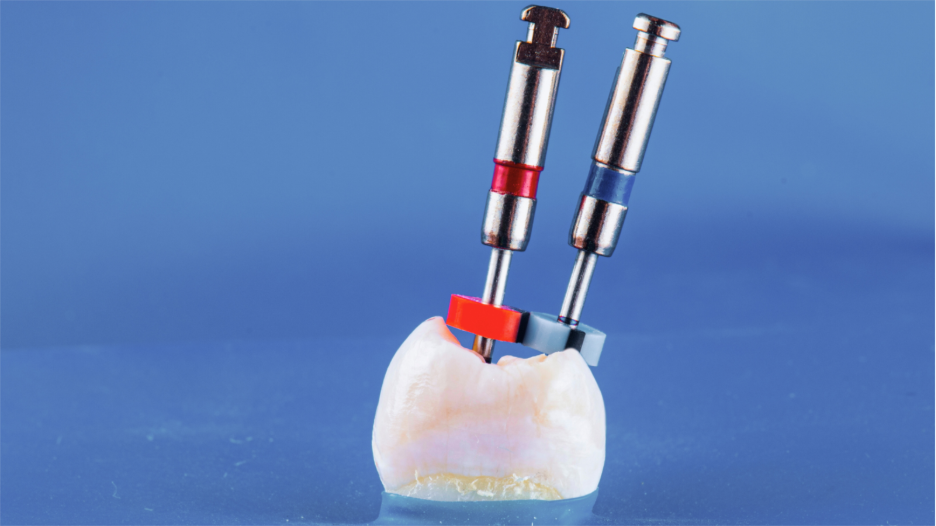Root Canal Tooth Pain: Causes, Safety, and What to Do if It Hurts Years Later
.png)
A root canal is often a long-term solution for a severely damaged or infected tooth. But what happens when discomfort returns months or even years later? If you're asking, "Why is my root canal tooth hurting after years?" you're not alone.
While root canals are generally safe and highly successful, delayed root canal tooth pain can sometimes signal a new issue. In this blog, we’ll break down the possible causes of post-treatment discomfort, explore the safety of root canals, and guide you through what to do next if your root canal-treated tooth starts hurting again.
Why Is My Root Canal Tooth Hurting After Years?
Root canal procedures involve removing infected pulp, cleaning the inside of the tooth, and sealing it to prevent further issues. However, even after successful treatment, pain in a root canal-treated tooth can return, sometimes years later.
Here are the most common causes:
1. Reinfection Due to Bacteria
Over time, a crown or filling that was placed over the root canal may become loose or cracked, allowing bacteria to re-enter the tooth. This can cause a recurrence of infection and inflammation.
2. Missed or Untreated Canals
Teeth can have complex canal systems, and in some cases, a canal may be missed during the initial procedure. If untreated, bacteria can linger in that space and cause future issues.
3. Cracks in the Tooth
Even with a crown, a tooth can develop fine cracks over time—especially if you grind your teeth or bite into hard foods. These cracks allow bacteria in, leading to tooth pain in the root canal area.
4. New Decay or Gum Issues
If decay develops around the crown or if the gum tissue becomes inflamed, it can mimic the sensation of root canal pain, even if the root itself is no longer vital.
5. Bite Misalignment or Pressure
Sometimes the way your teeth come together can shift, placing excessive pressure on a previously treated tooth. This can lead to root canal pain after years of being symptom-free.
According to the American Association of Endodontists (AAE), a well-done root canal has a 95% success rate, but complications can occur even years later if reinfection or structural problems develop (AAE.org).
Are Root Canals Safe?
There has been some online speculation in recent years about whether root canals are dangerous or if they’re linked to health problems. Let’s separate fact from fiction.
Are Root Canals Dangerous?
The short answer is: no. Root canals are a well-established, scientifically supported dental procedure with decades of research behind them. They’re designed to eliminate infection, preserve the natural tooth structure, and restore oral function.
Do Root Canals Cause Health Problems?
There is no scientific evidence linking root canal treatment to cancer, autoimmune diseases, or systemic illness. These claims stem from outdated studies from over a century ago that have since been debunked. Modern techniques use sterile tools, high-quality sealing materials, and thorough infection control protocols to ensure patient safety.
Both the AAE and the American Dental Association (ADA) affirm that root canals are safe and do not cause health problems (Colgate, AAE).
What to Do If a Root Canal Tooth Hurts Years Later
Don’t panic, but do act promptly. The longer a reinfection goes untreated, the greater the risk of further damage.
Here’s what may happen next:
1. Evaluation and Imaging
Your dentist will take X-rays and examine the tooth to look for signs of infection, a broken crown, or bone loss around the root.
2. Root Canal Retreatment
If infection is found, the old filling material may need to be removed so the canal can be cleaned again and re-sealed properly. This is called endodontic retreatment.
3. Apicoectomy (Root-End Surgery)
If retreatment isn’t possible or fails, a minor surgical procedure may be performed to remove the infected tip of the root.
4. Tooth Extraction
If the damage is extensive, the tooth may need to be extracted and replaced with a dental implant or bridge.
The good news? Many cases can be treated successfully without removing the tooth, especially when caught early.
Root Canal Tooth Pain: When to Worry
So how do you know if your symptoms are normal or a sign of something more serious?
Mild tenderness or pressure sensitivity right after treatment is normal and should resolve within a few days. However, tooth pain in a root canal that occurs months or years later should not be ignored.
Warning Signs to Watch For:
- Persistent aching or throbbing
- Sharp pain when biting or chewing
- Swelling around the gums
- Small pimple or bump near the tooth (gum abscess)
- Sensitivity to hot or cold that lingers
If you’re experiencing any of the above, it’s time to consult your dentist.
How to Prevent Root Canal Pain in the Future

Protecting a treated tooth is just as important as the initial procedure. To reduce the chances of root canal pain after years, follow these tips:
- Maintain excellent oral hygiene: Brush twice daily, floss once a day
- Visit your dentist every 6 months for checkups and cleanings
- Avoid chewing ice or hard candies that could damage the crown
- Use a nightguard if you grind your teeth
- Get any dental crowns or restorations checked regularly
Let’s Get to the Root of the Problem Together
At West Soho Dentistry in New York, your long-term comfort and oral health are our top priorities. Whether you’re experiencing new discomfort or just want peace of mind, Dr. Joanne Oh and our team offer expert diagnostic care, root canal retreatments, and second opinions, always with compassion and clarity.
Don't wait for the pain to get worse. Schedule your appointment today and let us help you protect your smile, now and for years to come.


